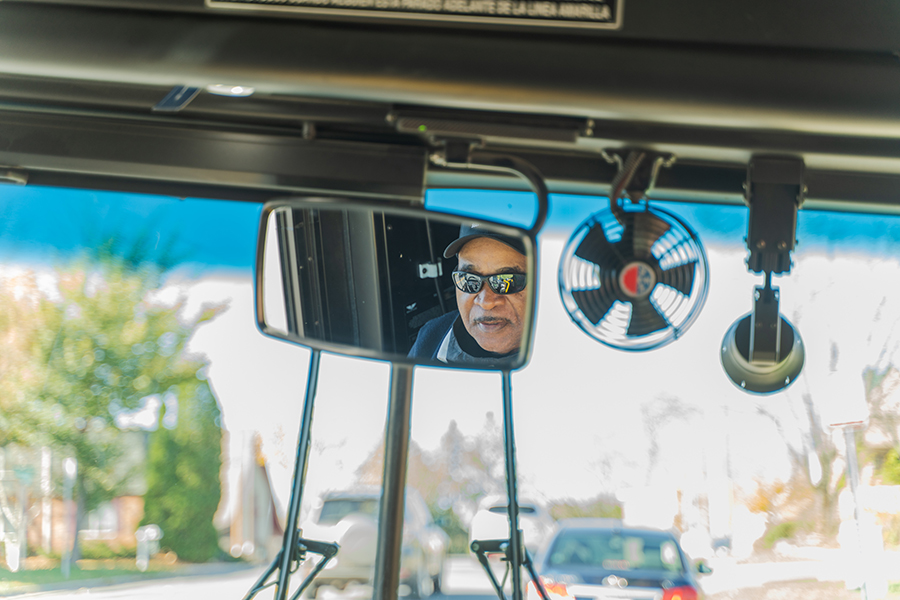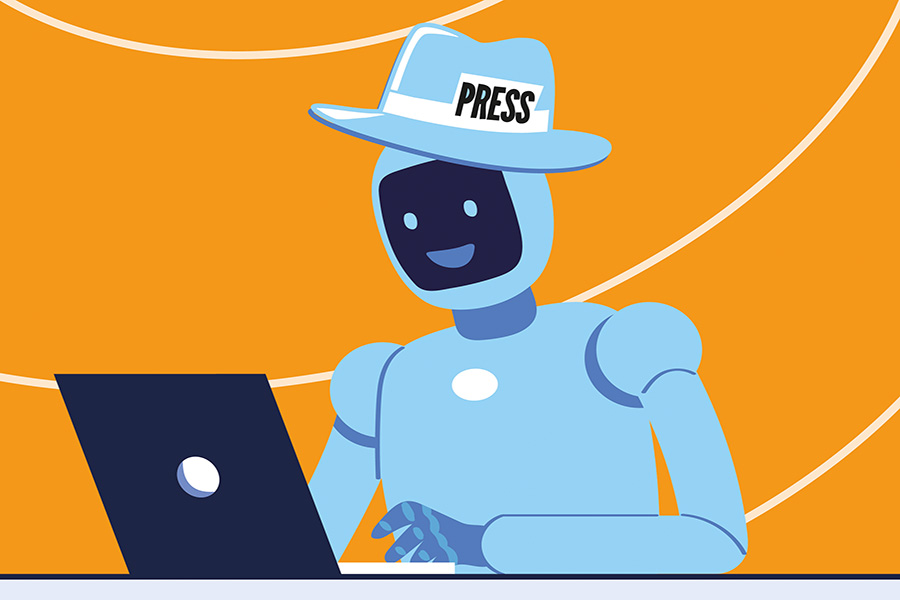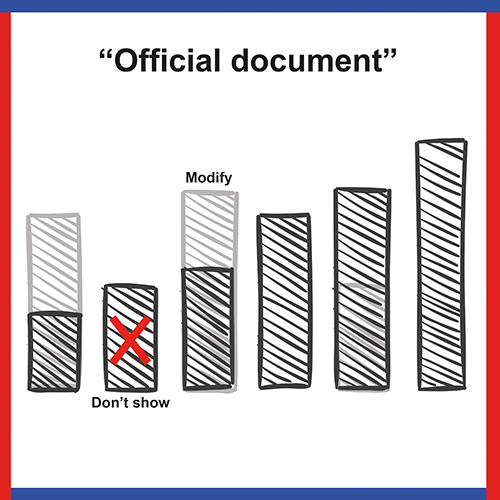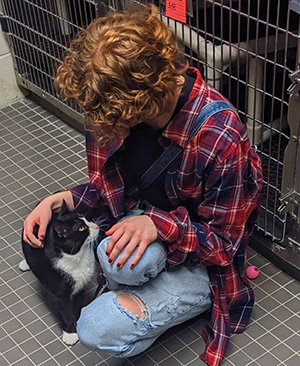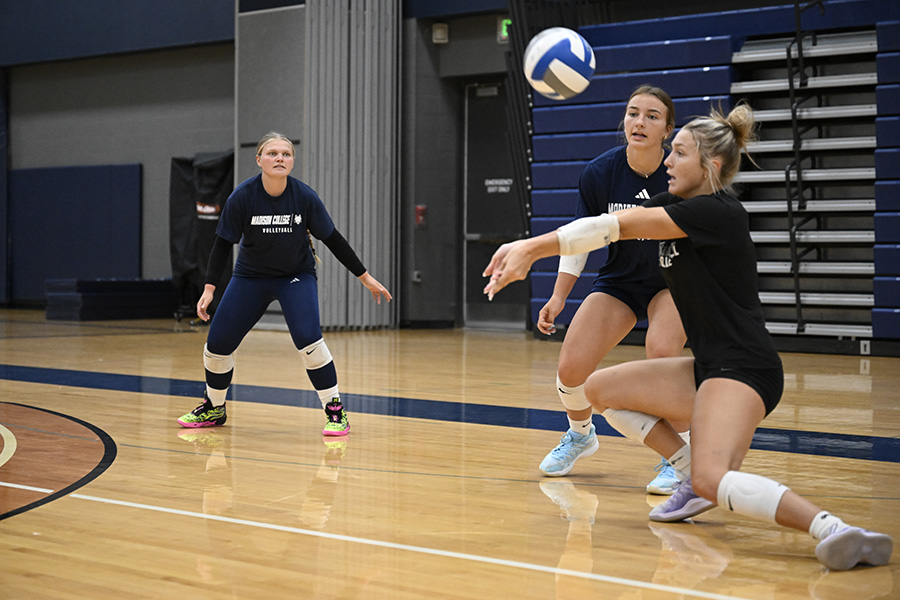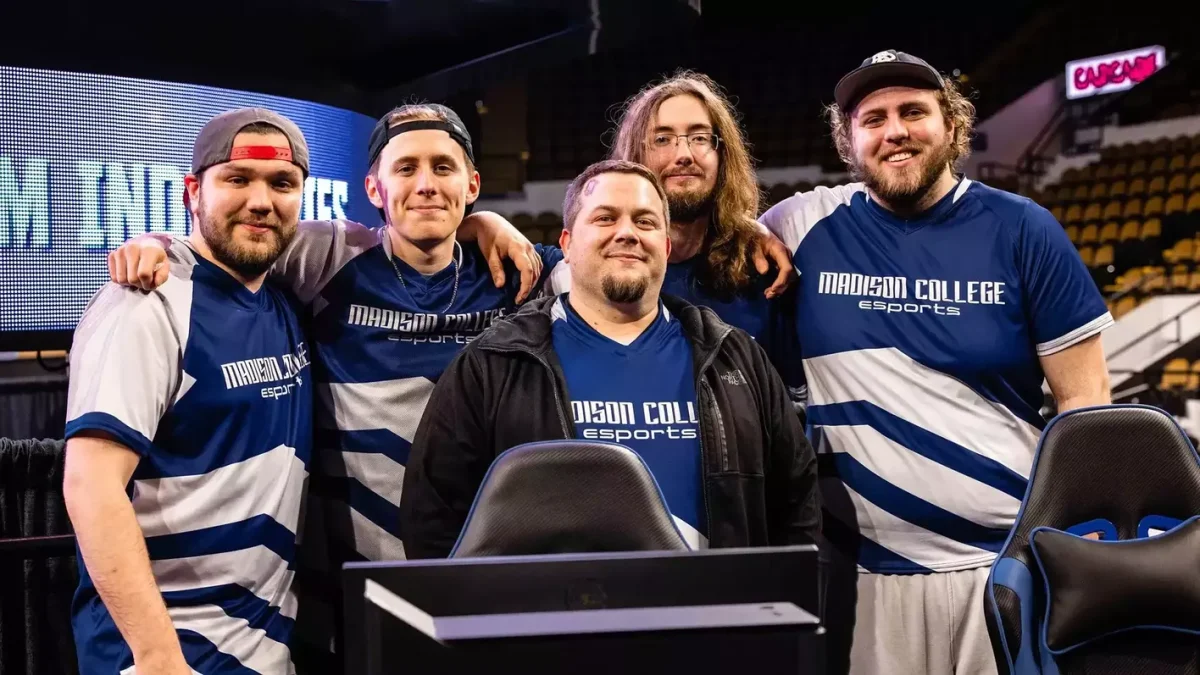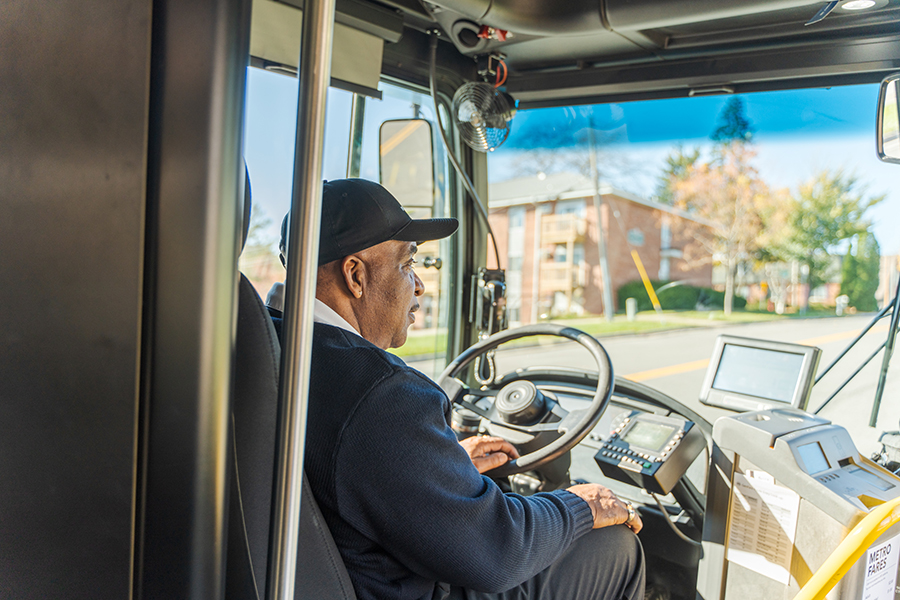Last September, on an unusually warm and sunny day for the season, the Metro Transit system launched its long-awaited new Bus Rapid Transit (BRT) line, where city representatives were treated to an open house, including riding the bus and a getting a glimpse of its new features.
Sitting in the driver’s seat was Clinton Boone, a 26-year veteran, ready to drive the route and showcase the new electric articulated bus. His personality was much like this September morning: warm and friendly, bright-eyed with an easy smile.
While he’s the driver behind the new launch, for Boone, his real calling is off the bus in the training center, where he has been teaching new drivers for the past 20 years.
Although Boone had considered retiring, when he learned the transit system received 62 articulated buses last January, he found it hard to resist training a new group of drivers. He returned to the classroom, where he felt most empowered.
“I like it because I see people learn how to drive the bus. I teach them how to drive the bus. When they come in, they say, ‘Oh, I can’t drive this big old bus.’ Yes, you can. If you can drive your car, you can drive the bus,” he said.
Before Boone teaches how to pivot or maneuver a bus, he must teach his most valuable lesson: getting along with others.
Boone has met thousands of passengers, and if he’s learned one thing in his career, he should never take anything personally. He’s trained about a quarter of Metro Transit’s drivers and gives advice about handling challenging passengers.
He warns about getting into a situation with a passenger, for instance, if they are upset about something or don’t have a fare, telling his classes not to confront a rider. That’s the first speech the trainees hear when they enter the classroom.
“Look at it like a ball you sit on your shoulder. That ball will roll off one way or the other in one direction. It’s going to come off your shoulder,” said Boone, demonstrating an invisible ball balanced on his shoulder.
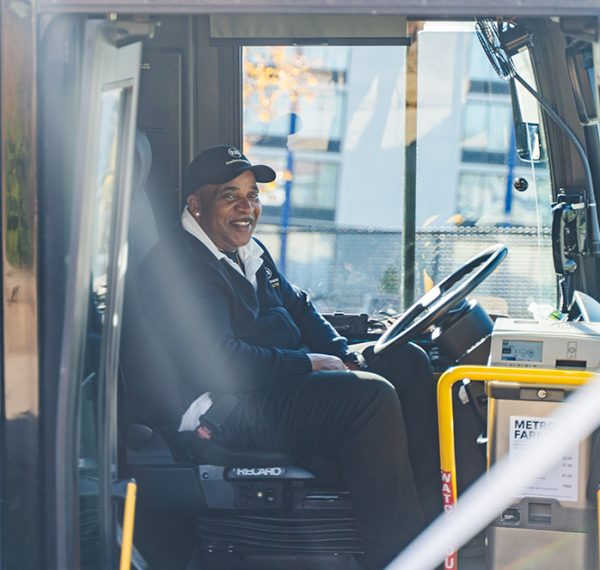
The balanced ball is a symbol for the passenger and for harnessing a driver’s emotions. Letting go of a confrontation will make a driver’s day better because if the driver gets mad at a passenger, he’s likely to treat the next one poorly, ruining a driver’s day.
The ball does not have to be on the shoulders for long. “You only got them (a passenger) for about 10-15 minutes on the bus. If they’re mad with you about something, apologize to them, said Boone, who tells drivers to de-escalate challenging situations. “Let it go.”
He’s been teaching this analogy to his classes for twenty years. In those two decades, many co-workers have told Boone that his ball comparison still impacts them.
Clinton Boone was the youngest of seven children, raised in Greenwood, Mississippi. In the late ‘70s, he visited his brother in Madison and decided to make the city his home.
In Madison, he met his ex-wife and had three children, two daughters and a son. He started a dump truck business, and while it was successful, sustainable profits were not guaranteed. He thought about finding a more stable job where he could share his love of motors. (Boone owns five cars and two motorcycles, including a 2006 BMW Convertible and a 1976 Cadillac Fleetwood Brougham.) As a collector, the Madison Metro was the perfect place for a job.
He was offered a supervisor position but declined because he loves to be behind the wheel. He was hired as a driver in 1998, and in 2004 an instructor position opened. With 12 other instructors, he rotates teaching new drivers and driving a bus.
Driving might look easy, but it could look deceiving. Boone said while a driver is sitting, it doesn’t look like they are doing much work. But when they come home, their entire body is tired. In addition to driving, they must deal with passengers, the weather and keeping the bus on time.
The job needs a driver’s full attention, and they should not let anything else linger in their head. Like avoiding passenger confrontations, Boone has a philosophy about a driver’s personal life.
“If you have an issue with something happening in your household, leave it in your car when you come here. Your day will go a lot better,” he said.
It goes both ways. Boone said that once drivers leave work, they should leave everything at work until they return. It’s important not to take any work issue home because if they do, they will be mad at their spouse or kids.
“Stress is terrible. Stress can hurt you. I learned that at a later date,” he said.
Whether he’s driving or teaching, Boone reflects tolerance and restraint. “You got to have patience. If you don’t have patience, it’s hard. It really is. And that’s what we stress to all the new employees that come in. You got to have patience,” he said.
Although Boone played a big part in the BRT rollout, he returned to driving his regular 40-foot bus, a vehicle used on one of his favorite routes. However, he misses the articulated buses, admitting that turning a 60-foot bus is easier than turning a 40-foot bus. Knowing this, he encourages new drivers to be more confident.
“Everybody — they’re looking at the bus. They’re looking on the outside saying, ‘Oh, this bus is too long. I’ll never get the bus around the corner.’ Once we showed him how to drive it. They were smiling, so everybody wants to drive them now,” he said.
